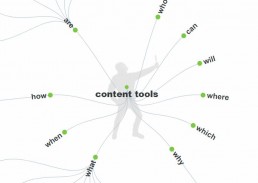How to build a kick-ass podcast for your business
Podcasts have been around for well over a decade but are now rapidly growing in popularity on account of their quality, portability and ability to fill 'dead time'.
The number of people regularly listening to podcasts is skyrocketing; with weekly listeners more than doubling in the past five years. What's more, podcast listeners are typically educated, affluent and loyal - a good bunch of people to welcome through the door of your brand.
But podcasting is still in its infancy in terms of the numbers of broadcasters. Compared to blogs (150m) and vlogs (50m) there were a mere 660,000 podcasts as of March 2019.
It's a good time to enter the podcasting market, hone your skills and use this growing media channel as a way to build an emotionally engaged audience for your brand. Here are five tips from my 2019 brightonSEO talk on how to make a podcast that gains subscribers, mentions, links and which, well, just kicks ass.
Establish a mission
All the best podcasts have a 'mission' which they can explain clearly and succinctly to their audience. Make sure yours is a true passion because you'll need to sustain your own interest as well as that of your audience through potentially hundreds of hours of recording. Don't feel like you have to follow the norm, though - podcasts come in all shapes and sizes. As long as you follow your own curiosity, you'll find a niche which shares that interest and success will follow.
"Know that you don't have to follow the norm! Create a show that's for you, that excites you & success will follow" -Adelaide Goodeve, The Adelaide Podcast
"Pick an underlying theme that runs through all of your episodes. Ours is topics relating to millennials so it helps us to work out what our listeners would be interested in hearing" - Pippa & Laura, The Millennial Matters Podcast
Create a clever name
There are two main strategies for naming a podcast. Number one is for celebrities, major organisations and popular broadcasters, who have the luxury of a massive following and / or a strong advertising budget. If this is you, the best option may be to name your podcast after yourself and simply gain traction through your already significant popularity. Number two is for newbies and smaller upstarts. If this is you, do some research to find out what your audience is looking for. Use tools like Buzzsumo, Google Keyword Planner, AnswerThePublic and Google Trends to build a powerful picture of your audience. Then create a name they'll find when they ask their questions online.
"You could have the best content in the world, but if no one can find you or knows about you then you're not going to grow" - Chris Brown, Undr the Cosh
"Just like in business and life, you can’t be everything to everybody. Therefore my tip is to focus on a niche that you genuinely care about" - Simon Tefula, The Simon Tefula Show
Secure exciting interviewees
Strong interviewees (alongside a brilliant host) are the backbone of any podcast. Firstly, the interviewees will help make each episode interesting and shareable. Secondly, if they have their own following, they'll share the podcast as well and help you make it famous. Don't treat interviewees like a commodity - treat them like the VIPs they are.
"Make lasting connections with the people you interview so they're more likely to share with their audience and tell their friends and family in general to help spread the word" - Lindsay Williams, Language Stories
Craft a solid intro
The first 30 seconds of your podcast are absolutely crucial. Use them to explain to your listeners what they'll get out of your podcast. Create a jingle using license free music from YouTube Audio Library or similar. And build a sense of anticipation and excitement so people feel pumped up and mentally commit to stay with you through the show. And be consistent with what you're offering to encourage long-term listeners.
"People will quickly stop following if it's irregular or doesn't have a set date" - Tom Bourlet, The Spaghetti Traveller
"Consistency builds audience engagement" - Philippa Hammond, The Other 1%
Build relationships
We've covered the relationships you build with interviewees. But the way to sustain a successful podcast beyond the first seven episodes (93% don't make it that far) is to build a powerful relationship with your audience. Podcasts naturally generate a special, emotional bond with listeners, which is what makes them such successful sales vehicles - 64% of regular podcast listeners have bought something after hearing about it on a podcast. To quote sound consultant Julian Treasure: "The human voice: It's the most powerful sound in the world. It's the only one that can start a war or say 'I love you.'" Build trust and cherish your audience - your business will reap the rewards of their loyalty.
"Don't feel obliged to upload an episode just because it has been recorded! Instead, make sure that you live up to your audience’s expectations” - Carl Reader, The Carl Reader Show
"I found being very open to and inviting feedback from early listeners helped me mould a show that suited their needs and built early loyalty" - Mike McGrail, The Different Minds Podcast
One extra tip? Get started. Every small step you take will bring your podcast closer to reality.
"Get started. So many people have ideas for a podcast but then procrastinate and create excuses for not doing it. Take the first step today! Secondly, to get started you don't need a massive budget. Start small then go from there, like I did" - Dan Hawes, Student Diaries & Graduate Recruiters Network
Journalist requests: Five steps to success
 Guardian business journalist Jon Card has been making journalist requests for many years, for articles which ended up being published by national titles in The Guardian, Daily Telegraph and The Times.
Guardian business journalist Jon Card has been making journalist requests for many years, for articles which ended up being published by national titles in The Guardian, Daily Telegraph and The Times.
In this downloadable PDF, Jon explains how platforms such as Response Source, JournoLink and HARO work, as well as the Twitter hashtag #journorequest, and reveals five simple steps you can take to make them work for you.
Join our mailing list below for occasional freebies, offers and media advice and we’ll send your copy of Journalist requests: Five steps to success as a first instalment.
Take the easy route to success with journalist requests - download your copy below!
Five templates for emailing journalists
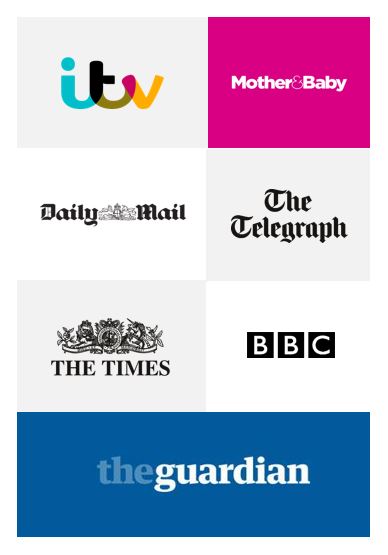
We often hear from people who want to know exactly what to say when they email journalists. What kind of information do journalists want? Should I be chatty or formal, offer lots of description or get straight to the point?
To answer these questions and more, we've used our 30 years of combined media experience to generate five templates for emailing journalists which you can keep hold of and use again and again for all kinds of messages.
From replying to journalist requests to sending out press releases to pitching stories, these templates have all been tried, tested and developed by experienced digital PR Corinne Card, who's used them to gain press from places like the Independent, Daily Mail & BBC. They've also been checked & edited by Jon Card, a Guardian business journalist who receives hundreds of email pitches every day.
Join our mailing list below for occasional freebies, offers and media advice and we'll send your five templates for emailing journalists as a first instalment. These templates will be your shortcut to success with journalists, so you won't have to learn the hard way!
Know your audience & THEY will make you famous
When you get to know your audience; who they are, how they think and what they really want, you can’t help but start to take their perspective. And perspective-taking can be powerful. Social psychologist Adam Galinsky says: “When I take your perspective, and I think about what YOU really want, you’re much me likely to give me what I really want.” When you know your audience inside-out, you can create content that will surprise and delight them. And when they react to that content, you can learn even more.
Use audience data to create a virtuous circle of content
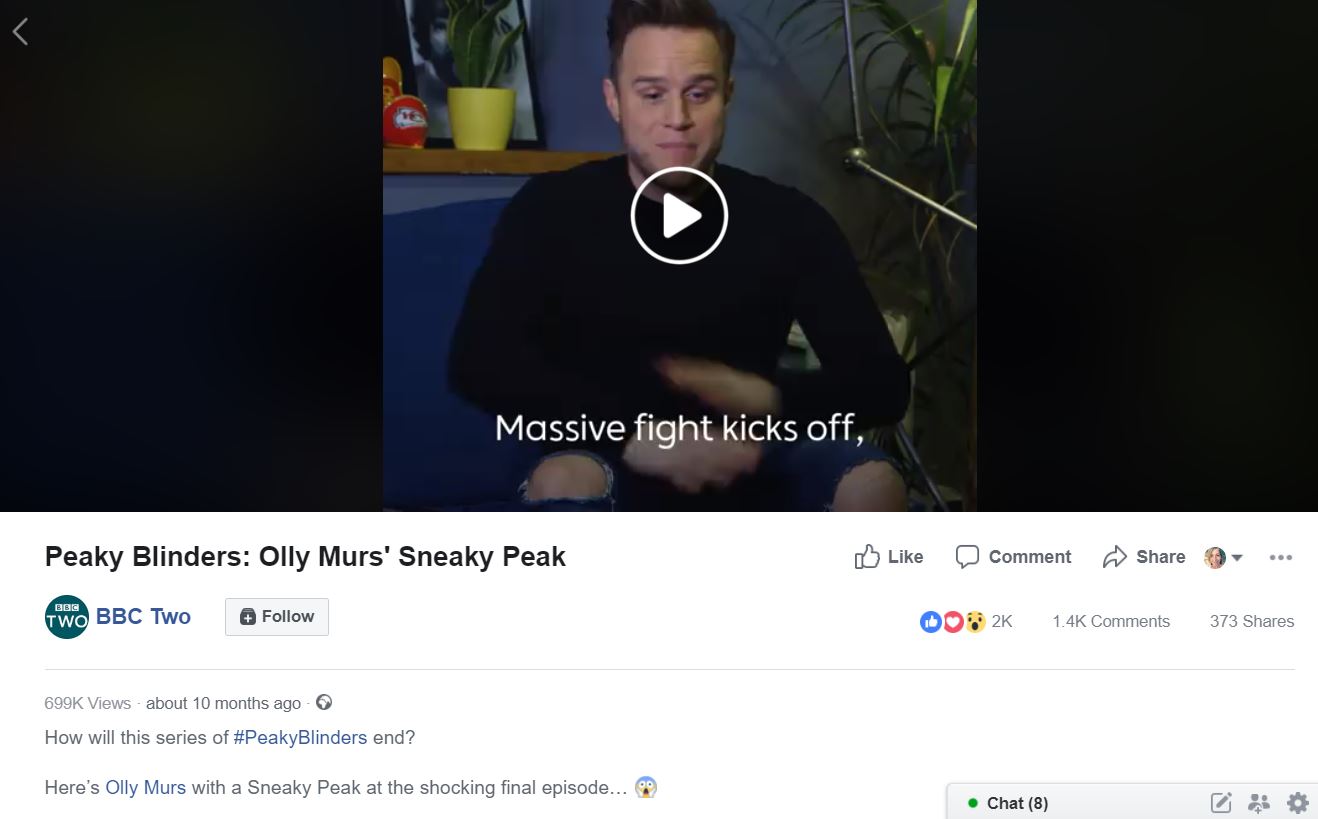
At last week’s Ada’s List conference, BBC content strategist and founder of The Storm Collective Rachelle Denton showed how you can use the data which results from content to move you to another, more empathic and insightful stage - and how you can do this continually, in an ever-evolving circle of content creation and improvement. It’s a strategy Rachelle’s used to market successful TV shows like Peaky Blinders and Killing Eve - to thrilling effect.
When Rachelle was looking for influencers to help market Peaky Blinders, she didn’t start with the budget and see what she could buy. Instead, she started with the audience and worked out how she could surprise and delight them.
Looking into Peaky Blinders’ audience data, she found singer-songwriter Olly Murs was a fan of the show. So much so, it turned out, that he would be delighted to have early access to Peaky Blinders clips and share his reactions with his millions of online fans, rather than a expensive commercial agreement.
To further illustrate the value of audience data, Rachelle used the example of Spotify. The brand cleverly reflected their own customers' data back to them with a string of amusing, shareable ads. Once posted onto social media, Rachelle noted, data-driven campaigns like these can then feed off the comments and reactions they gain to help brands create yet more powerful, audience driven content.
Nurture the influencers in your audience
Influencers are an interesting case – they’ll often help you to illustrate a point in a workshop, for example, as it helps to show someone people recognise. That’s why I showcased Martha Lane Fox in a press pic to help describe the ways you can illustrate an online business. It didn’t occur to me at the time that the lastminute.com founder herself might then become part of that workshop’s audience when she spotted the photo online.
It’s worth bearing in mind which influencers might take an interest in your work in advance of any business activity. With Twitter, influencer interaction with your content is reasonably likely. Think of ways your brand can increase the likelihood of surprising and delighting any relevant influencers.
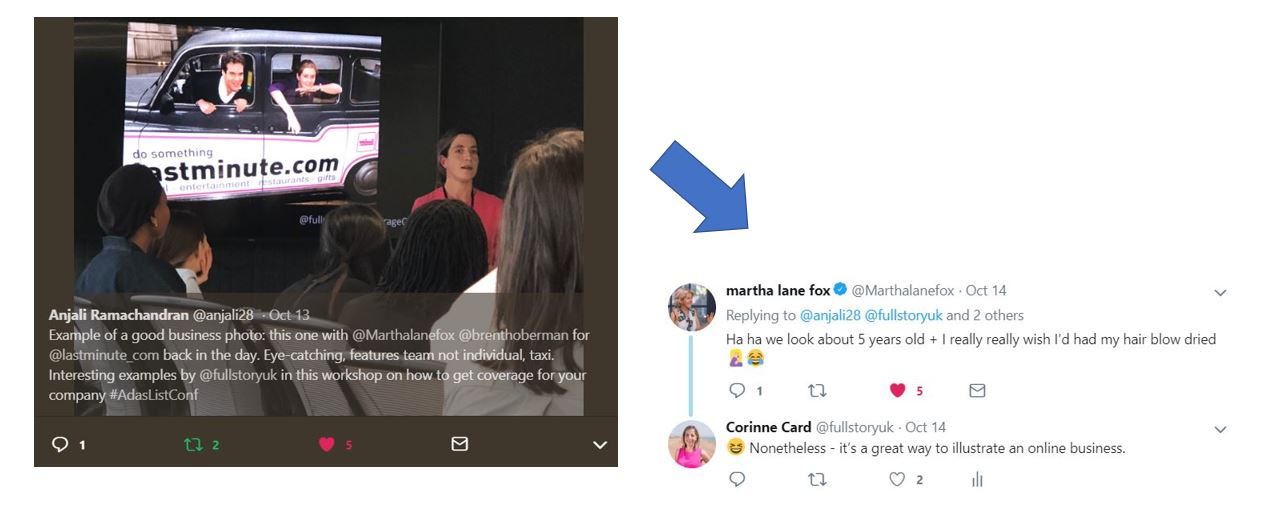
Build a leadership team that publicly reflects your audience
Knowing your audience is an important part of getting press for your business. If you know you want to appeal to a diverse audience, it makes sense to have a diverse team you can showcase in the press.
Marissa Ellis at Diversily created a 'Change Canvas' for the Ada's List conference, which highlighted the case for increasing diversity in the workforce, from the various perspectives of people at the event. Alongside the wonderful points, including the importance of supportive internal networks and creating an atmosphere of psychological safety, is a media-related one from me: diverse teams will help you get press.
Press photos which only show middle-aged men in suits within your leadership team are boring and won't help your company appeal to a wide range of audiences. People tend to identify with others they perceive to be like them, so it makes sense to offer the diverse people in your audience a true mirror to help them identify with your brand and the people who run it.

Know your audience: key points to remember
- Your audience is more diverse than you think. Learn who they are, then surprise & delight them
- What interesting things does the data show about your audience? Learn, iterate & repurpose what you're learning in a virtuous circle of content
- Find the influencers within your audience - Martha Lane Fox was effectively an audience member for me, Olly Murs was one for Rachelle
- Reflect your audience in your team - Diversily's Change Board at the Ada's List conference shows the business case for creating a diverse team. One factor of this is your audience knowing they're represented at the highest levels of your organisation. This goes hand in hand with generating more interesting, relatable stories for the press
VIDEO: Why telling the story of your business is key to getting press
Being able to tell the story of your business is a major step towards gaining press coverage.
Famous entrepreneurs such as Richard Branson, Anita Roddick and James Dyson are all examples of expert storytellers, whose businesses have reaped the rewards of their tale-telling expertise.
WATCH Jon Card explain why this matters so much to business journalists like him:
Must-have content marketing tools for 2018
Everyone knows that content is king. We love content because we know it can also be the key to gaining excellent coverage from the press. The good news is, savvy companies have created a number of excellent tools to help people create audience-driven, press-worthy content.
Let’s look at what some of the top tools do and how they can help you generate great content.
TOP CONTENT MARKETING TOOLS
- YouGov Profiles show traits of your typical user in a fun, interactive way. The 'lite' version is free
- Answer The Public shows the questions people are asking about your brand or industry. Free to use & makes cool diagrams
- Google Trends again, free. It reveals what search terms are trending - including YouTube search if you're creating video content
- Buzzsumo shows the most popular articles according to social media shares. A paid for platform but you can do a free trial
- ahrefs shows where you and your competitors are getting inbound links. You could also try the Moz Link Explorer for free
- Google Alerts keep you up to date with relevant industry topics and brand mentions. Quick to set up and manage - do it now!
- Google Surveys can help you research your market. Choose a one question survey for highly affordable research
- Twitter polls can help you tailor content as well a generate it
LEARN ABOUT YOUR TYPICAL USER
Knowing your consumers’ needs and interests gives you the power to connect with them more effectively. Now, you can craft messages and campaigns which resonate with your user and encourage them to engage. Tools which can help you find out about your typical user include YouGov profiles. Here’s the free version: yougov.co.uk/profileslite#

GAIN INBOUND LINKS WITH YOUR CONTENT
Great content starts with a deep understanding of the consumer’s perspective. What are their pain points? What are they thinking? What specific information are they looking for? Answering common questions is a way to create content people will be interested to read, and relevant sites are more likely to link to. Try answerthepublic.com to find out what people are asking.
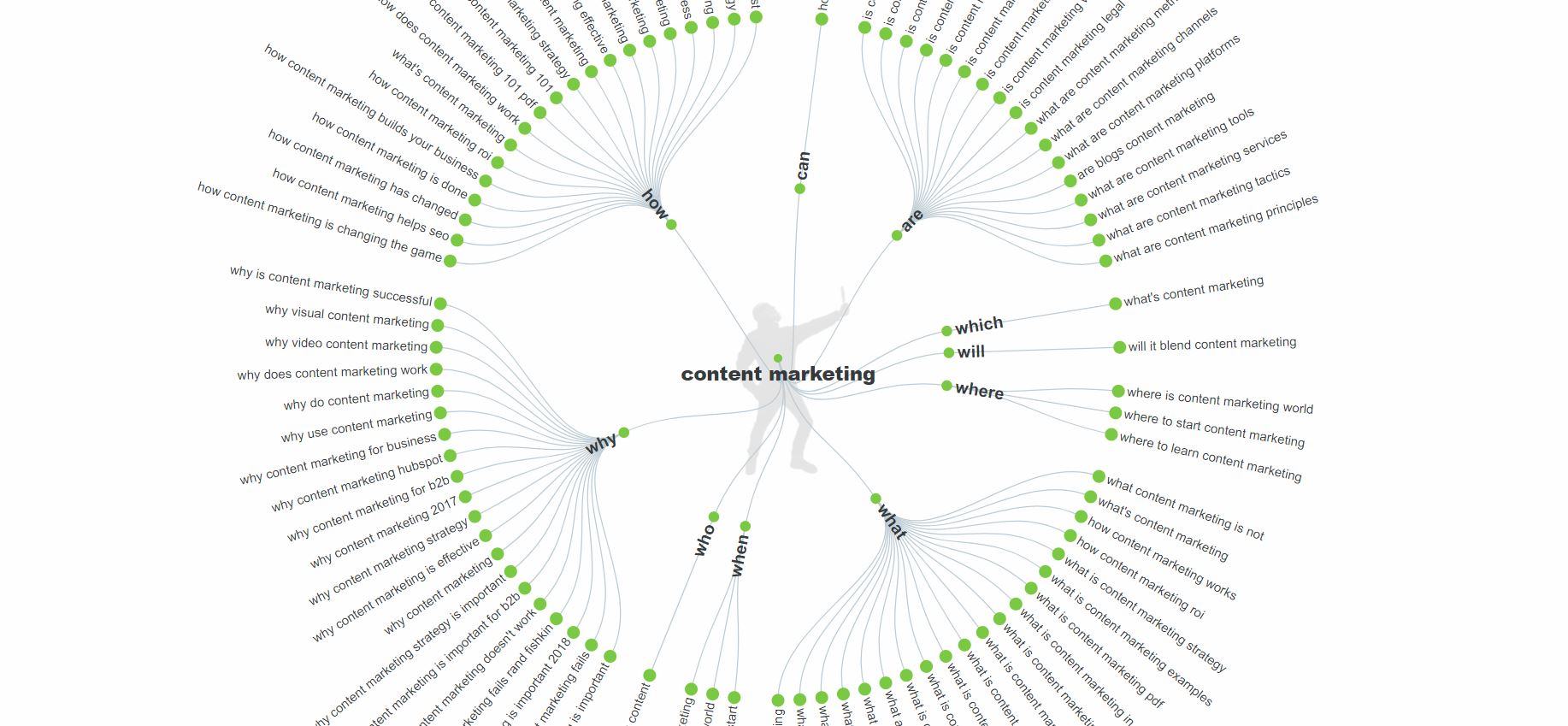
MAKE YOUR CONTENT FRESH
Users will react well to content that is fresh. Google Trends can help you identify seasonal and trending terms, as well as terms which have become less interesting to people over time. You can also search for top terms on YouTube specifically. AND, you can compare terms to find out which you should use to provide a fresh and interesting title. https://trends.google.com/trends/
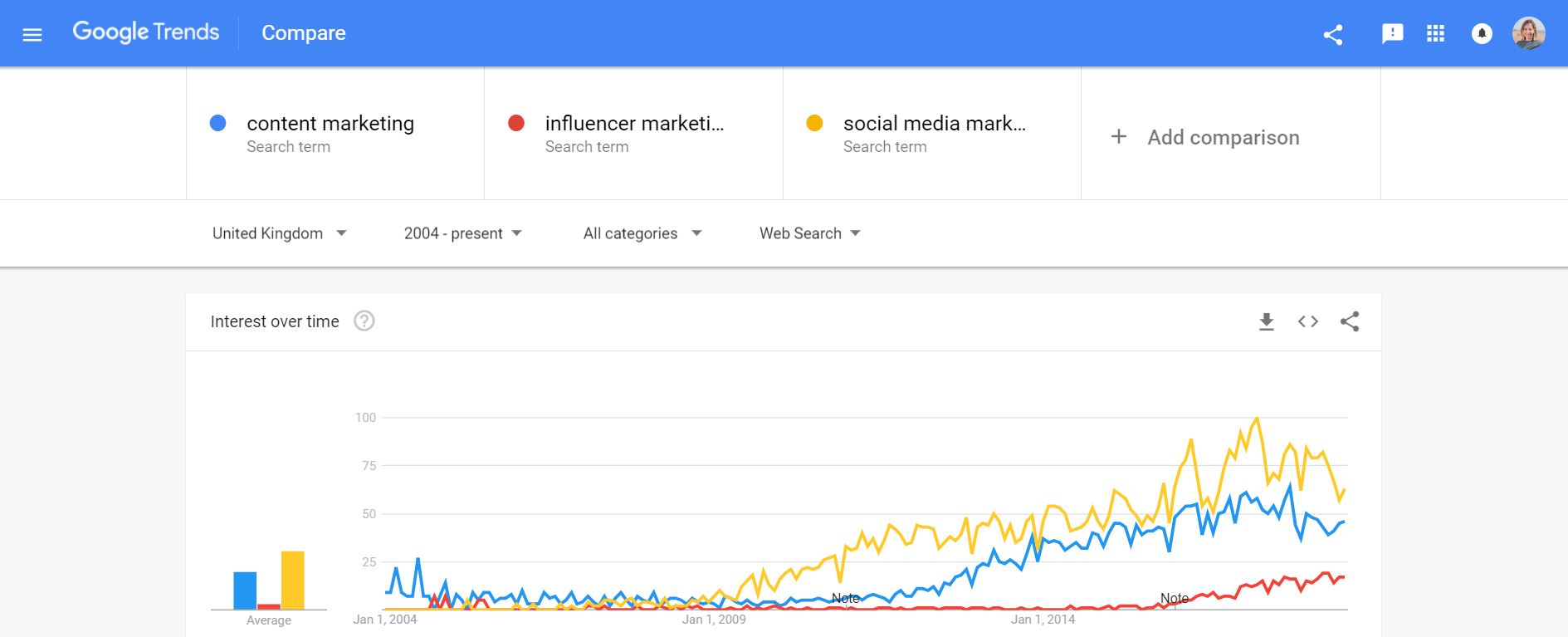
LEARN FROM HIGHLY SHARED CONTENT
Finding out which content which has been shared the most in your industry has a range of benefits. It can help you identify content you’ve created which has been popular, so you can plan similar kinds of posts and articles. It can also help you gain ideas from competitors as well as other influencers. Use buzzsumo.com to search relevant keywords, sites and pages to find out what works.
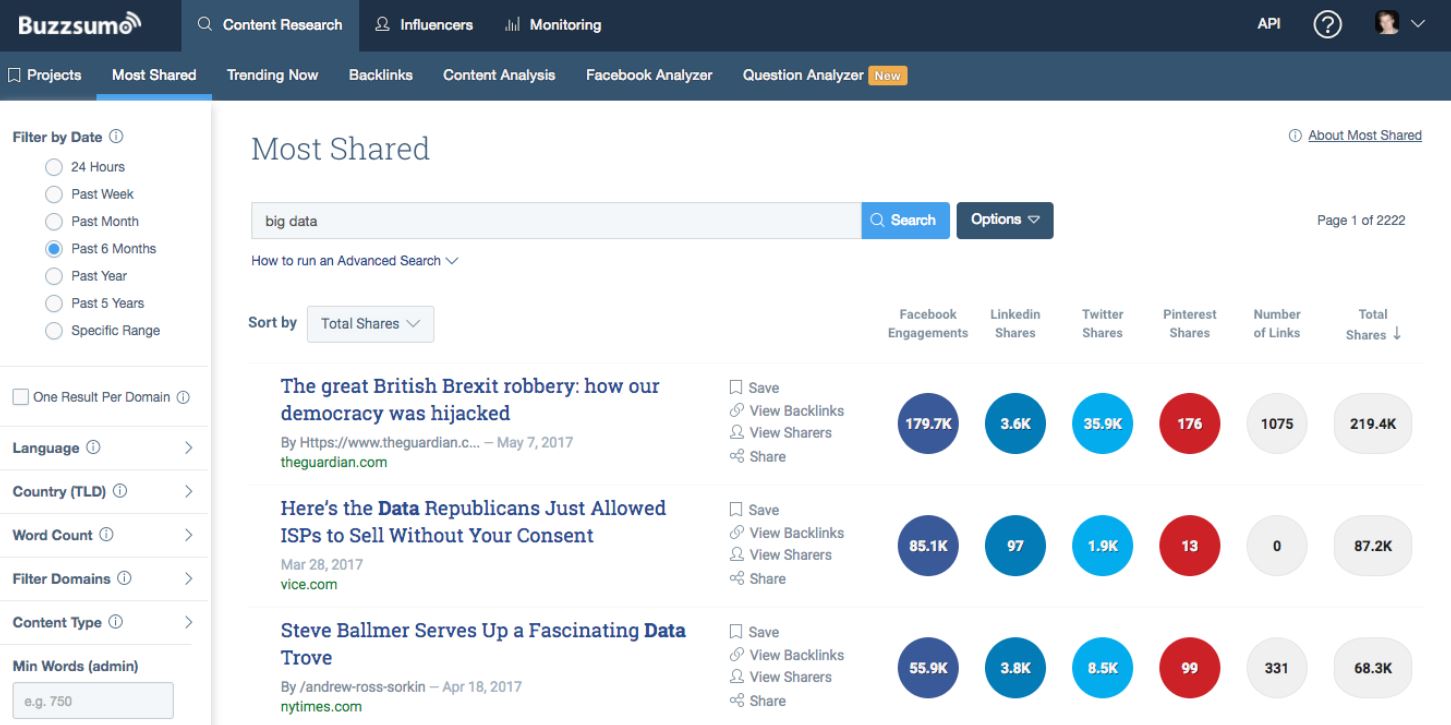
LEARN FROM INBOUND LINKS
ahrefs shows where you and your competitors are gaining inbound links to your site. This can help you identify interested audiences, generate content topic ideas and provide insights into the type of content that’ll gain more links to your site. A free tool you can try to find out more about your inbound links is Moz’s Link Explorer: https://moz.com/link-explorer
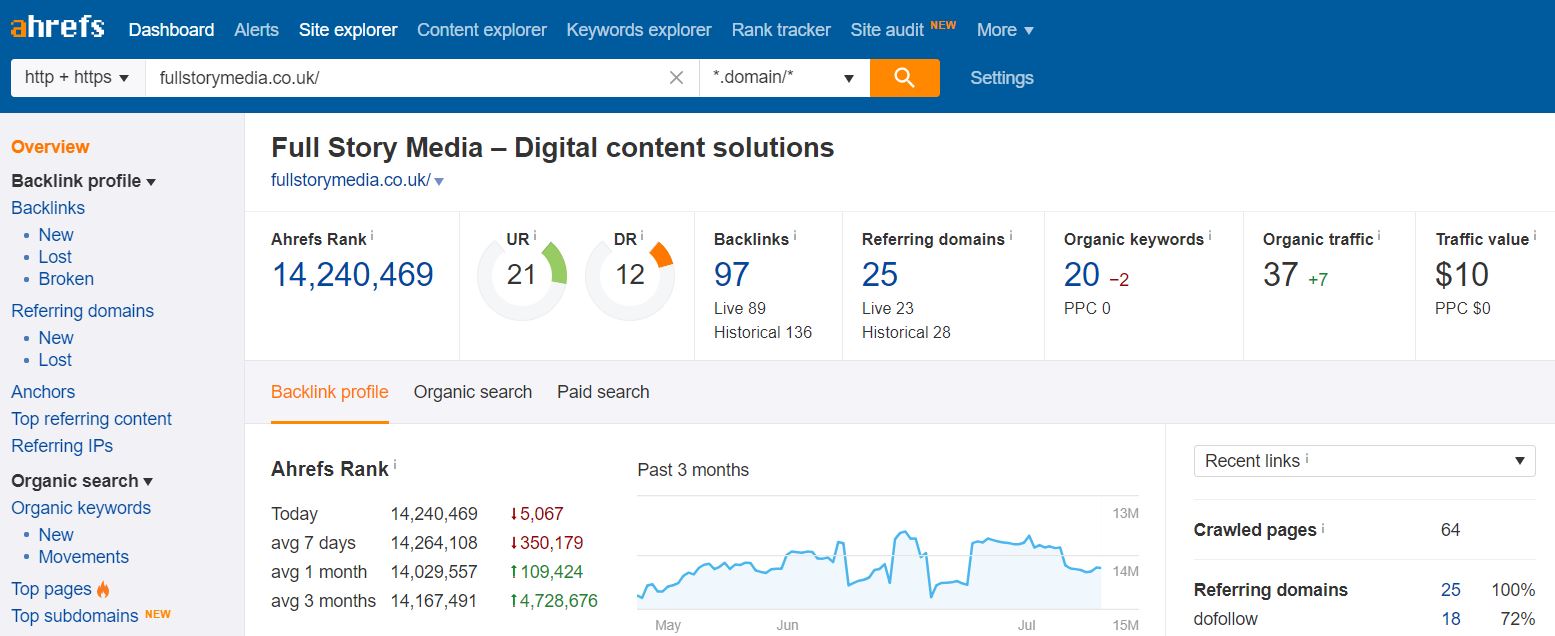
LEARN FROM FRESH INDUSTRY ARTICLES
When you’re a content creator, nothing can beat being up to date with the goings on in your industry. Setting up Google Alerts for relevant terms is quick and easy, and will lead to a deeper understanding of your industry, relevant topics and how they’re developing over time.
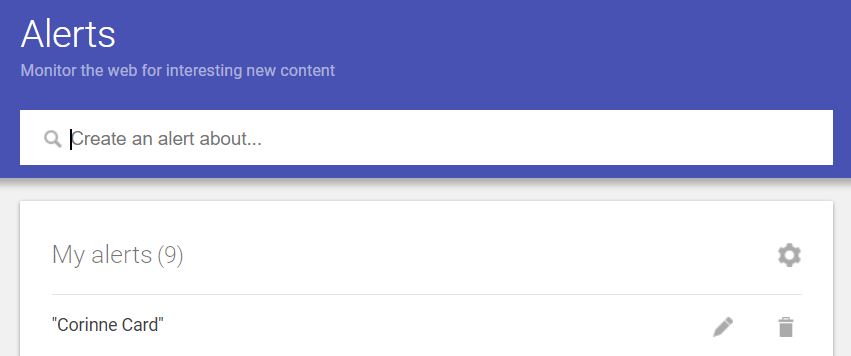
ASK YOUR USER FOR THEIR ADVICE
Asking relevant audiences for their advice is both engaging for them and insightful for you. You can set up a Twitter Poll in seconds and gain fresh information. The poll itself, if written concisely and engagingly, will also be highly shareable. You can also promote the poll to relevant, engaged users. You can use the results to inform your content, or even as a basis for an article in its own right.

DISCOVER DEEPER INSIGHTS
Going beyond the Twitter Poll, a Google Survey provides insights into consumer opinion but also offers demographic information like gender, location and age. Use a one question Google Survey and you can gain 1,000 responses for £100. You can still gain multiple insights by using the multiple choice option.
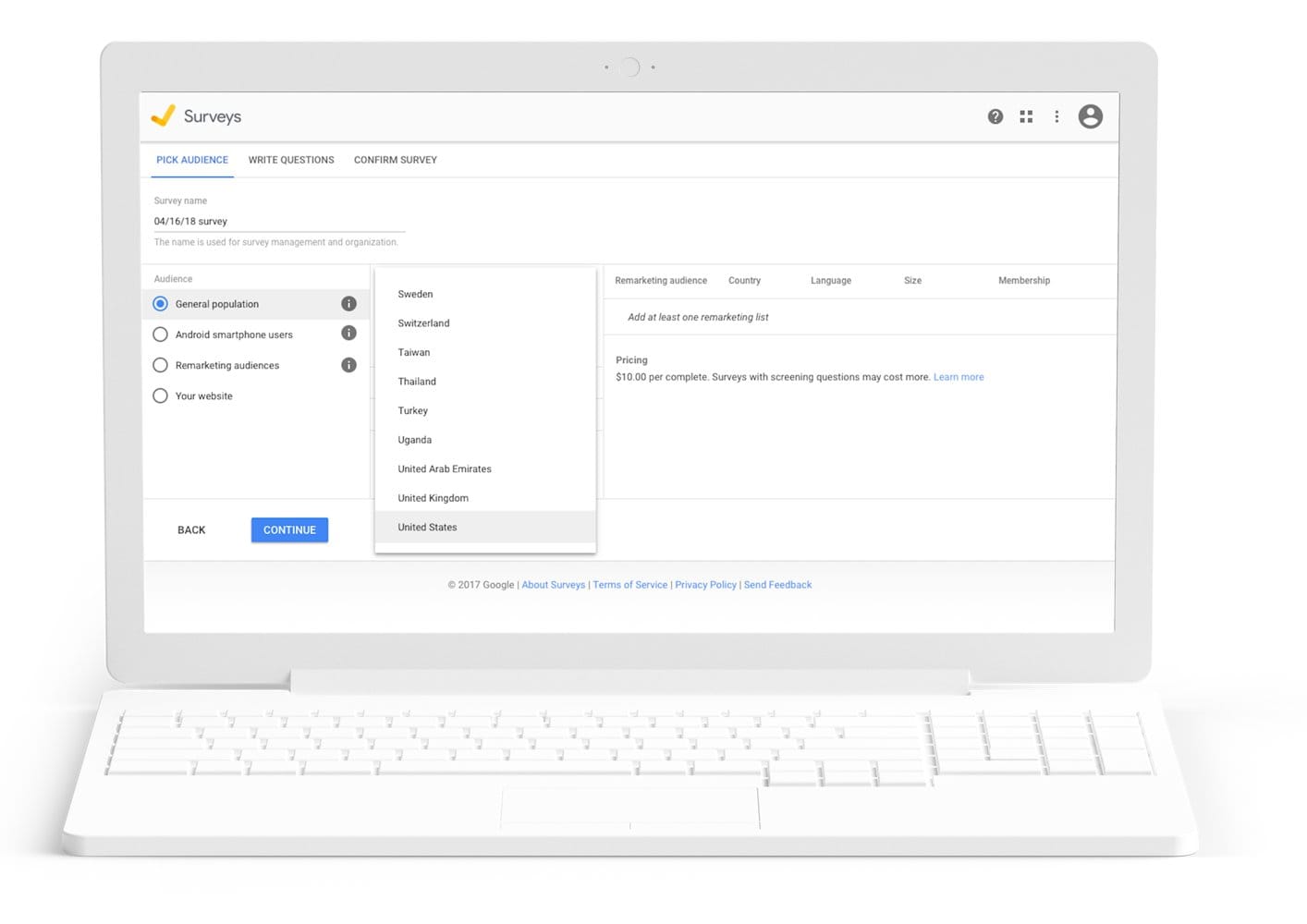
IN THE FUTURE
With technology enabling a host of new software applications, we're expecting to see plenty more exciting content marketing tools come into play in the next couple of years. One example is Yappa. Set to be the world's first insight driven marketing platform, Yappa will use AI and machine learning to help you make better content for your specific audience. We'll keep you updated!
The decline of UK journalism (and what it means for your business)
An independent review revealed this week that UK journalism is in freefall.
Meanwhile, if you have a business and you'd like it to grow, the press is an obvious place to look to build awareness.
But you need to understand the state of the press and the pressures journalists are now under, in order to communicate effectively with them.
What the review found
The independent review into the future of high-quality journalism in the UK, chaired by Dame Frances Cairncross, revealed that:
- Total press industry revenues declined by more than half over the last ten years
- The number of full-time journalists has fallen by over 25% since 2007
- A quarter of all regional and local newspapers have closed in the past decade
These stats are not good news for journalists or, indeed, the press industry as a whole. But what do they mean for the average business owner? Here are three ways you can leverage this knowledge of the press sector to help grow your business.
1. Take the journalist's perspective and provide them with the finished article
When seeking press for our businesses, it's natural to start from our own viewpoint and provide the kind of message that will be best for our business. In the past, there would be journalists ready to receive a press release, look for a possible story and turn it around into something interesting for their readers. Now, you need to do that work for them for your story to stand a chance of being covered.
Less journalists at the news desk means less time for the remaining few to faff about with stories that are clearly promotional, or provide no real value on interest. However, those businesses that do take the time to create something which can be cut and pasted and immediately work will be rewarded with great coverage.

2. Save publications time and money with a superb photoshoot
Whereas even local press would regularly be able to 'send out a photographer' to do a shoot on demand, this is less and less the case for even national papers. Meanwhile, with iPhones able to provide excellent high res photos businesses all have the ability to create and send a good set of photos which help to illustrate their story.
Get clued up on the kind of images your target publications tend to use - usually interesting pictures that help to tell a story - and get going creating them on behalf of those publications, so they don't have to.
3. Make news happen
While journalists used to have more time to put into seeking out the latest stats or compiling in-depth reports on specific industries, this kind of time-consuming, investigative reporting, like everything else in journalism, has far less budget than it used to. Make use of this knowledge by doing the legwork yourself.
Look at wider trends in your industry and provide journalists with sets of data and inventive imagery they simply don't have the time or money to find or create for themselves. As long as the pieces of content your business produces are genuinely interesting to readers, the results you'll gain via a grateful press are likely to far outstrip the time and money you've put into creating them.
How to get newspaper sites to link to you
Getting your business in the news is tough enough. But, when you're trying to get a link included in a story on a major news outlet, the challenge - along with the potential reward - is far higher.

Here's why you need to think carefully about how to get links back from news sites, plus some strategies that work.
The power of inbound links
Inbound links have been a central part of building an online presence since Google’s Larry Page invented PageRank in the late 1990s.
As web link authority Moz explains in 'The Beginner's Guide to Link Building': "Links as a ranking factor are what allowed Google to start to dominate the search engine market back in the late 1990s... it was so effective because it was based upon the idea that a link could be seen as a vote of confidence about a page."
While Google's algorithm has changed hugely since the '90s, the number and quality of inbound links to a site are still used as some of the main factors that determine how well that site ranks in the search engine results pages.
Meanwhile, some of the best quality inbound links are those from news sites. If you can gain regular, inbound links from authoritative news sites, this will help your own site to rank well. And because most news sites have a lot of readers, those links will also bring direct traffic to your site.
News sites
There is no single rule for gaining links from news sites, but one of them is surely 'editorial justification'. For a journalist to include a link, they will need to be able to justify it from the perspective of their typical reader.
So provide something on the site they will be linking to that's both relevant to the story and genuinely useful to the reader. It could be further information on the topic of the story, perhaps a video or gallery of images. But it could also be something a reader can register for, which they will value, or a competition they can enter.
News sites have different policies on links, but there is a surprising amount of autonomy granted to journalists in this respect.
It's always worth thinking about the perspective of a journalist. Journalists are not just writing stories, but also publishing, promoting and distributing them. They want to create good stories, that are well shared across social media. By being a good source, and also by promoting their work via your network, you can help them do their job better and more easily.
It is worthwhile highlighting the strength of your network. Perhaps you have a huge Twitter following, or a newsletter which the story will be added to. Offer a quid pro quo - "if you can add a link, we will definitely share it right across our network" (see step 4 for more on this).
Successful strategies for gaining links from news sites:
- Set up a photo competition and let local news sites know when someone in their area is shortlisted, with a story about the entrant as well as their photo included in the email. But do this while the competition is still open for entries, as then the news site has a reason to link back – so that readers can enter the competition, too.
- Host a downloadable set of results from a survey you've conducted. Provide relevant news sites with a headline statistic, followed by information and quotes about the study. Then link back to the full set of data on your site.
- Describe an upcoming event that readers of a news publication will have a reason to be interested in. There will need to be something surprising or newsworthy event, in order for it to gain press attention. Then, provide a place to register for the event on your site, and link through to that from your article.
- Be a useful contact and source for journalists and then use this relationship as leverage. Try to create ways that make both parties happy. Build a strong network and allow them to benefit from it. Journalists want their stories to be well read and shared, they also want access and exclusive content. Offer them a deal.
Top tips for speaking at conferences, from inspiring women in tech
We often recommend that people take opportunities to speak at conferences, to help them get known as an expert in their field.
Well, now, as a business owner, I’m taking my own advice.
In April, I'll be speaking at one of the biggest search conferences in the world: BrightonSEO. And, being a first-time conference speaker, I’ve decided to find out more about what I’m getting myself into.
According to a 2015 survey, only 25% of speakers at tech events are women. I recently joined an international network of over 5,000 women in tech, including some of those 25%. I wondered: what were these women leaders doing in their conference talks, that I could learn from? I put the question to them - here were some of their top tips.
Content
Pick an angle you are excited to talk about, and be excited talking about it, and let no-on steal your fun - they can't have that power unless you give it to them - Sophie Freiermuth
Really key point from a friend: best submissions I get are those that start from the conference purpose rather than what a speaker is expert in - Saffron Governor
People love a story more than dry technical exposition. For a technical talk, a talk about "I had this problem, I had this criteria for a solution. I tried X but it didn't work for Y reason. Then I tried Z, and it wasn't quite right again. Then I tried XX, and it was much better because.... Later we discovered YY was also an issue so we had to modify...." is much more engaging than just starting with dry technical exposition of technology XX - Julie Lavoie
People also love anecdotes, it's what I remember most from talks after I've forgotten all the technical content and it's also what people come up to me talk to me about in my talks as well. It also gives people a point of entry to talk to you about later in the conference - Julie Lavoie
Mix up heavy, technical content with a joke or anecdote, so it's not just monotone one type of thing - Julie Lavoie
Slides
Simple slides work best - don't cram too much info on them. Use a large font size (even bigger than you think). Images say a lot - Saffron Governor
Put your Twitter handle on the bottom of every slide so people can tweet about your talk while you're talking, also so it's easy to contact you - Julie Lavoie
Good-looking slides are nice but you can get away with "crappy" slides if your content is interesting - Julie Lavoie
Practice
Practice how you deliver it (body language and tone) rather than what words you say - Ada Shum
Time yourself when you practice. Your talk should be the time they have asked for. 20 mins means 20 mins - Saffron Governor
I think the best thing you can do is practice. Videotape yourself using your computer or smartphone and watch it and notice how you present and how you can improve. Practice in front of others and ask for their feedback. You'll always perform a little different;y when you are in front of others (you may speed up or slow down), so it's important to have that practice. One of our instructors talks a lot about how your body holds tension when you get nervous - pay attention to where you are holding tension and focus on releasing - Danielle Barnes
If there's a local meetup close to the date of the conference with a similar topic as the conference, you can often ask if they are interested in hearing a prelim version of your talk. Some meetups often just have this already (eg. local Python meetups getting close to PyCon) It's a good way to practice and get early feedback without the pressure of a big audience - Julie Lavoie
I'd also recommend not memorizing your talk word-for-word. It's great to have down your introduction, your close and some transitions, but if you memorize your full talk and get nervous and forget a piece, it can really throw you off. It's also really hard to talk naturally when you are that scripted. Instead, I'd have your key points down (maybe speaker notes and/or small index cards you can reference), and again - lots of practice. Remember your slides are there to guide your audience, not you. Know your talk without your slides, and do your best not to turn your back to your audience to look at them - Danielle Barnes
Tech
If you can check out the venue before-hand, do so. Try to get onto the stage to get a feel for it early in the day so you can own the room - Saffron Governor
Organisers aren't always on top of everything, so make sure you make yourself known on arrival and find out the procedure for micing up - Saffron Governor
Come with your laptop and all possible connectors to a projector, and have your own remote, too. I love the Logitech one, highly ergonomic, and free yourself from being stuck at the lectern, and looking at the keyboard to navigate your slides - Sophie Freiermuth
Some conferences will have a speaker room, where they'll let you practice with your laptop and the type of projector they'll have in the room. If they don't have this, you can ask if there's an empty time you can try out your laptop with the projector, mike, etc in the room where you'll be speaking. I try to do this - Julie Lavoie
If you have a Macbook or some other common laptop, they'll usually have an adaptor for your laptop, but you might want to check for other laptops or if you're using Linux - Julie Lavoie
Appearance
If they attach a mike to you vs. speaking into a stationary mike, tie your hair or else your hair will rustle in the mike the entire time, and in the recordings - Julie Lavoie
If they're video recording the talk, take off your conference badge before speaking, or else it will be distracting in the video - Julie Lavoie
If you have a chance to see the room ahead of time, it's a good idea to wear clothing that contrasts a bit with the background of where you'll be talking, so no black shirt if the background is black or you'll look like a floating head - Julie Lavoie
Nerves
Visualise you're on stage and under limelight with tons of people before the event - Ada Shum
Don't be afraid of feeling nervous, let the nervous feeling carry over into adrenaline and energy to put into your performance - Julie Lavoie
Remember: if they approved your proposal, they want to hear what you've got to say - Saffron Governor
Ensure the start goes well. After that it should just flow - Ada Shum
Everyone wants to see you do your best, they’re on your side - Saffron Governor
One of our instructors recommends a quick meditation before going on stage and some voice exercises, like tongue twisters or singing - you can do it in the bathroom or outside, before you start to warm up your voice - Danielle Barnes
How to talk
Vary your tone. Speaking in the same tone all the time makes people fall asleep, whereas a variation feels dynamic and keeps people interested - Julie Lavoie
It's always good to try to speak more slowly since you're likely to speed up from feeling nervous - Julie Lavoie
If you get stuck at any point, just pause and take a breath. Pauses are actually a great way to give the audience a moment to process what has been said, and can help you stay calm and reset if needed. Everything, including a pause or breath, seems like it takes much longer on stage - 10 seconds can feel like 10 minutes - so it never seems as long to the audience as it does to you - Danielle Barnes
Martha Graham said something to the effect that in every audience, there is one person and one only that one really performs for. I find it helps to find a sympathetic face and imagine that I'm speaking to them specifically. Of course, not staring at them the entire time, but returning to their face - Julie Lavoie
I knew a guy early on who was just a fantastic public speaker, and (this sounds a bit weird but the technique works for me), I "imagine" that I'm him, giving my talk, his energy, his mannerisms, his ultra-confidence, sort of acting in a way, and it really helps me - Julie Lavoie
Recommended resources
Power poses are a great warm up to help you feel confident - Danielle Barnes
Scott Berkun's book Confessions of a Public Speaker is chocabloc full of great tips and advice - Sophie Freiermuth
Sam Kap wrote a great article a while back about prepping for a talk - Danielle Barnes
Have a look at the YouTube videos by Metaspeech, they have some good tips - Mary Matthews
Toastmasters is an excellent place to cut your eye teeth and build confidence - Saffron Governor
Thanks to:
Saffron Governor, Ada Shum, Sophie Freiermuth: www.baguetteUX.com, Julie Lavoie: almosteverywhere.github.io, Danielle Barnes: womentalkdesign.com, Mary Matthews: www.memrica.com, James Governor & Steve OGrady: redmonk.com
How to get press as a small business

It's hard to get heard, when you're only small.
Big businesses can afford to be loud, and they often spend thousands, if not MILLIONS, getting the right kind of attention from the press. But small businesses need press and links just as much, and are sometimes more deserving of attention.
They just need to find ways to be heard.
To correct the balance between big businesses and small ones, we need SMEs to have the confidence, and ability, to shine, in the face of what can seem like overwhelming competition.
Luckily, while smaller organisations don’t have the same budgets, they do have some advantages, which we can use to propel them into the limelight. Where big brands usually win on budgets, they often lose on agility and the willingness to experiment.
- Startups have a natural passion, which makes them authentic
- A small, new brand doesn’t have a big audience, and there’s less to lose, which reduces the fear of failure that can slow bigger businesses down
- For startups, there isn’t a gap between ideas and launch – and ideas don’t get watered down due to risk
But there’s still a big knowledge gap between small companies and their rivals – the PR agencies that work for big companies.
But one principle which can help small businesses compete, comes from psychology. Social psychologist Adam Galinsky points out the importance of perspective taking: looking at the world through the eyes of another person. Galinsky explains that perspective taking expands your range of acceptable behaviour, and increases your power. He says:
"When I take your perspective, and I think about what you really want, you're more likely to give me what I really want."
And, when we take someone's perspective, it allows us to be ambitious and assertive, but still be likeable. All very useful for a small company that needs confidence in the face of big business competition.
And what do other people want, that can lead to you getting great PRESS? Well, journalists want articles which are newsworthy, suitable for their readership, and, in many cases, ready to publish. Consumers often want to see their own work, and personal stories, championed in the press. And everyone wants to be told they’ve done a good job.
If you can use the narrative, expertise and resources available to you through your business, to give others what they really want, you’ll be able to get the press that your company deserves. But how can you give them these things? I’m going to give you some tools which will help you use perspective-taking to give you the confidence and insights to earn press and links, without the need for a big business budget.
FOCUS ON PHOTOS
One thing that journalists really want, and that many marketers forget, is photos. Pictures can determine story selection and dictate the media agenda. And there are a number of ways small businesses can use them to get press. So, get a photoshoot. Your company, itself, has a story, or a number of stories, which will be interesting to the press. But a photoshoot will help you to tell, and to sell, those stories.
Get some photos of your founders, which help to illustrate who they are and what they do. These will be invaluable for getting them press for years to come.
And, get users to provide you with high quality images. We’ve run user generated content campaigns that have gained press and links from countless news publications, radio sites, councils and colleges. One campaign, that got a link from the BBC, involved someone who won a selfie competition, with a selfie taken on top of a mountain.
We found the right person to contact in the BBC – someone who was based in the area of the competition winner. We took their perspective, as someone who wanted articles suited to their readership. We also took the perspective of the competition winner, who submitted his photo because he was, rightly, proud of his own work, and wanted to share it.
Also, if you sell tangible products, get high quality photos of these. And, if they’re things which could conceivably be gifts, make sure you have photos of them taken with a white or transparent background. Because everyone: news, magazines and blogs, loves to publish gift guides. There are hundreds of them.
And, if you can offer a simple image of your product on a white or transparent background, there will be hundreds of opportunities for you to place this in major titles, and relevant blogs, to get amazing inbound links, press and sales.
USE RESPONSE SOURCE
Journalists often need an expert opinion on a particular topic. In many cases, as a small company, you can be the expert, by helping a journalist who’s perspective you’ve learned. And to do this, you can use a service called ‘Response Source.’ It’s a service I would recommend every small business invests in. Journalists use the platform to send out queries about articles they’re writing, which PR people or businesses can respond to, and get press and links in the process.
You can choose relevant categories and take a free trial. With that trial, you can see where journalists are looking for expert opinions, articles and images which you’re able to provide. And you need to become an expert at responding quickly and effectively. Taking the journalist’s perspective and providing them with EXACTLY what they want.
But there’s another important point about perspective taking, and that’s thinking about the moment the journalist has sent out a request. At that moment, they don’t know if they’ll get one reply, or hundreds. So, if you can be first, and reply within the hour, with exactly what they want, you have a much higher chance of getting noticed, and getting press. A couple of days later, when they already have a hundred responses, you might be too late.
But also consider, from their perspective, they need to be able to justify why they’ve chosen YOU to quote as the expert. So give them an interesting, relevant quote, and give them, and their readers, reasons to believe you’re the expert. Mention well-known clients, awards and any other notable achievements, in brief, when you introduce yourself, and in a way that can be published directly ahead of the quote you’ve provided.
PREDICT THE FUTURE
But sometimes, you’ll want to be PROACTIVE in getting press, working out for yourself what journalists will want and when, and providing them with just the right content at just the right time, purely from your own work, imagination and hypothesising about the future.
Many sites will show you upcoming events and awareness days, so you can work out when to target journalists with relevant content, tailored to their publication. But a good way to get ahead of the competition is to have the confidence and wiliness to research and target the things other people might NOT have spotted. To do this, you need to know the press around your industry, and the press around your consumers’ needs and interests, inside out. So; read, read, read.
Have the confidence to get in touch with authorities to strengthen your content, and always take their perspective, as well as the perspective of the public. By taking other people’s perspective at every stage, you can gain TRUST with authorities, and TRUST with the public. And, In the long term, TRUST leads to people engaging with your brand, over others. But journalists will need more than just trust in order to use your content. You need to get everything ready for them in a way that they can use it.
WRITE THE NEWS
This includes writing a press release effectively. The first thing you need is a story. If you want it to be published by news sites, it has to be news.
It needs to have a hook that makes it new. News stories work well if there’s an element of SURPRISE, if it’s something people care about, if there are fresh, verifiable stats and if there’s a news peg – something BIG, that’s already happened, and that your news story relates to.
When you’re writing the release, it should be written just like news. That means, write to the standard ‘inverted pyramid’, eliminate jargon and sales pitches, get straight to the point and write in the third person, so it’s all ready to publish. And it makes sense to aim for an inbound link, both for traffic and for SEO. But, for a journalist to include a link, it’s not enough that you want one in there, because they’ll need something called ‘editorial justification’.
They need to be able to justify the link from the perspective of their typical reader. So, provide something useful on your site that’s not available in the release, or give the reader something to DO there, like enter a competition or register for something they’ll value.
DIGITAL PR IS POSSIBLE FOR SMEs
Ultimately, to do effective digital PR, you need confidence in your product, and you need confidence in your abilities. Make sure you’re passionate about what you’re marketing, take other people’s perspectives, follow these steps and you’ll be able to make any company famous.








